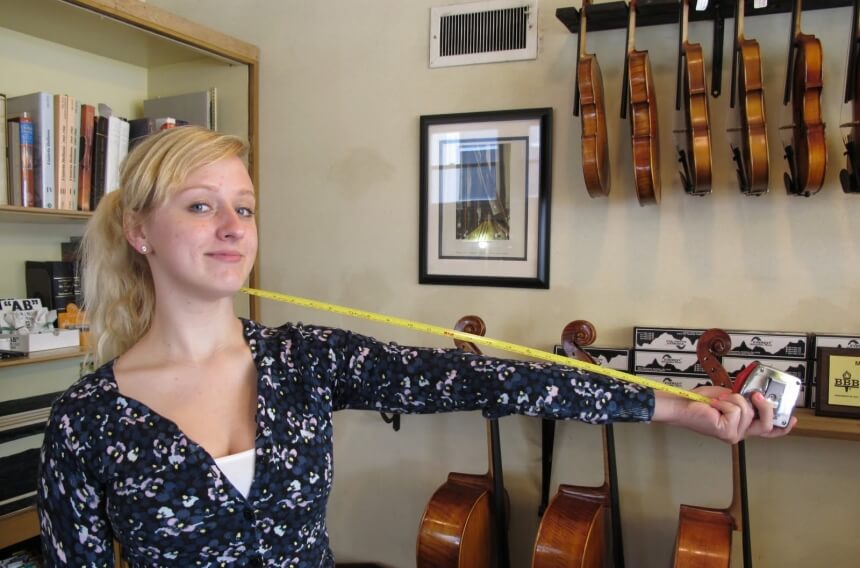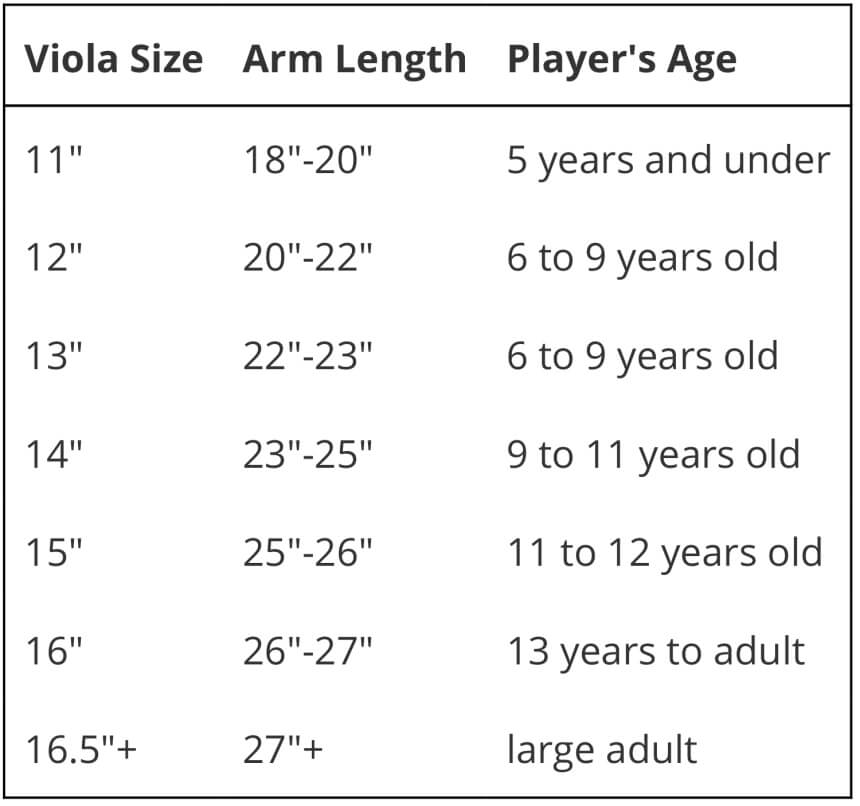The best violas offer users the convenience of playing using a variety of techniques.
What exactly is a viola? These are instruments that belong to the violin family and have an almost similar design. You might have, in some instances, confused violas with violins since noticing their differences, at first sight, requires an understanding of the violin family.
Notably, violas are different from violins because they can be played using different methods- players may pluck or bow them, depending on their preferences.
Violas also produce low and deep sounds, which is not common in violins. When considering purchasing these instruments, you should understand viola sizing since they come in different sizes.
Furthermore, age matters- violas designed for adults are not convenient for children and vice versa. This viola sizing guide will enlighten you on the steps you should take to ensure you have the best violas.
 The first step you should take when purchasing a viola is to measure it.
The first step you should take when purchasing a viola is to measure it.
As previously mentioned, different types come in different sizes. Hence, understanding how to measure to make the best choice.
It is worth noting that acquiring a viola with a size unsuitable for you or the person you are purchasing it for is a waste of your money. Playing the viola with the wrong size will force you to overstretch, which should not be the case. Stretching too far is uncomfortable and will not allow you to play at your peak.
Furthermore, a large instrument is challenging to handle- you risk losing interest in playing with big violas. On the other hand, small violas lead to cramps, reducing the ability to play the instrument. You will have difficulty learning how to play the viola with one that does not fit you.
Experts recommend the Mendini 14-Inch MA250 viola as the best. The instrument has a maple fingerboard and chin rest for comfort while playing. It also comes with a lightweight case and is designed with Mongolian horsehair that does not bleach.
Experts say you need to understand the viola sizing arm length when measuring. Measuring the instrument is determining how far you stretch your arm to play. You should lift your arm and develop a position where your fingertips come in contact with your shoulders. Then, move your arm in a vertical position- this should be done while the hand is drawn away from your body.
Once you reach around forty-five degrees, you will feel some tension in your biceps. This position is perfect for playing the viola. Twist your hand as if you are playing the violin, then move it away, almost as if you are now playing the viola. Extending your arm past that position makes it challenging to move fingers freely. You now understand why the size of violas must be considered.
Viola sizing is straightforward since you only need to be keen on the designs.
Inspecting a wide range of violas will enhance your experience in determining the proper sizes. In the process, you will notice that large violas differ in their size by half an inch, while small ones are different by one inch at most.
Viola sizing for children is also a straightforward process. Some violas for children have similar sizes to 4/4 violins or might be smaller. Children can also use violas similar to 7/8 lady’s violins since it is smaller than the 4/4s.
The 4/4 violins are perfect for adults. Therefore, using violas of the same size or smaller, whichever is comfortable, will give the best results. Have a look at this viola sizing chart to understand the best viola sizes for different ages.
It would be best to consider the body and neck length in combination with the back length to determine the best viola sizes.
Finding the appropriate sizes of violas can be challenging. Add the back and neck length to determine how far you will need to stretch your arm while playing. Then, deduct the length of the strings from the result to know how far you need to stretch your right arm. You should always keep in mind the body and neck length when selecting violas.
Knowledge of viola sizing is paramount when looking to purchase one. Violas are not measured in the same way as violins. Therefore, you should understand the fundamentals of measuring it to avoid confusing one with the other.
Measuring violas is necessary since they come in different sizes. Avoid the disappointment of realizing the viola you purchased is not suitable by thoroughly inspecting its size relative to your arm’s length. And you stand to enjoy using the instrument when you buy one that offers comfort and easy playing.